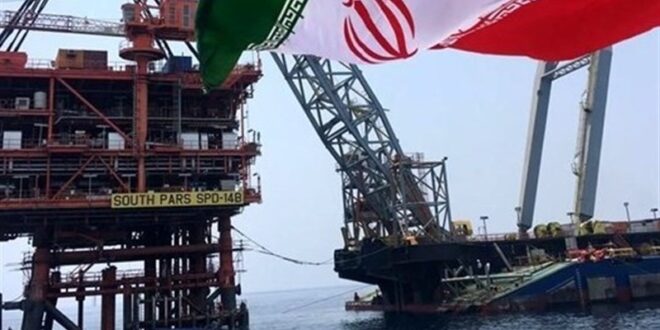The managing director of South Pars Gas Company (SPGC) said that 1.96 trillion cubic meters (tcm) of natural gas have been processed by the complex refineries and injected into the country’s gas network since the complex was launched 25 years ago.
Speaking to Shana on the occasion of the complex’s 25th establishment anniversary, Ahmad Bahoush said: “SPGC was established on 20 October 1998 as one of the subsidiary companies of National Iranian Gas Company (NIGC) which is responsible for the operation of onshore facilities of the South Pars gas field.”
He said the first official production and processing of natural gas from the second refinery of South Pars (phases 2 and 3) began in the Iranian calendar year 1380 (2001), adding: “At that time, 50 million cubic meters of feed was received from the platforms of the South Pars gas field and 40 million cubic meters of natural gas was processed on a daily basis.”
According to Bahoush, at the time, 80,000 barrels of gas condensate and 400 tons of sulfur were also produced daily.
Emphasizing the significant development of the 13 South Pars refineries over the past 25 years, Bahoush stated: “The feed received by the complex from the platforms of this joint field is now 650 million cubic meters per day, of which 580 million cubic meters of natural gas is produced and transferred to the national network.”
Back in August, Bahoush said that 75 percent of the country’s natural gas is refined at the refineries of the complex.
Speaking at a meeting of the country’s oil industry managers on August 4, the SPGC head said: “SPGC produces rich gas in the offshore platforms and the produced gas is processed at the complexes 13 onshore refineries.”
“Part of the output is used as petrochemical feed and light gas is injected into the national gas network,” he added.
South Pars Gas Company is the largest subsidiary of NIGC which operates the onshore facilities (phases 1 to 24) of the country’s giant South Pars gas field.
South Pars gas field, which Iran shares with Qatar in the Persian Gulf, is estimated to contain a significant amount of natural gas, accounting for about eight percent of the world’s reserves, and approximately 18 billion barrels of condensate. The field is divided into 24 standard phases.
In late August, President Ebrahim Raisi officially inaugurated Phase 11 of the South Pars gas field, which was the last phase of the giant field’s development project in the Persian Gulf.
During a visit to Assaluyeh port in the southwestern Bushehr Province, Raisi opened the project and met with local people as well as oil industry managers and experts.
South Pars Phase 11 will initially produce 15 million cubic meters of gas per day before raising recovery to 56 million cubic meters of gas, 50,000 barrels of gas condensate, and 750 metric tons of sulfur per day.
The gas from South Pars Phase 11 will be transferred to the onshore refinery of Phase 12, where it will be processed and injected into the national gas network.
According to Head of the National Iranian Oil Company (NIOC) Mohsen Khojasteh Mehr, South Pars Phase 11 will have 24 wells and generate an annual income of $5 billion once its development is completed.
“The development of South Pars Phase 11 is one of the NIOC’s most strategic and important plans and projects, which finally came online in the current government after a 20-year delay,” he said.
Iran had previously awarded the development of the phase 11 project to a consortium comprised of France’s Total, China National Petroleum Corporation (CNPC), and Petropars which is a subsidiary of the National Iranian Oil Company (NIOC), however, Total and CNPCI pulled out of the project in 2019 due to the U.S. sanctions.
The mentioned phase was finally developed by Petropars after its partners left the contract. The drilling operation for the first well of the mentioned phase was officially started in December 2020.

 Iran Energy News Oil, Gas, Petrochemical and Energy Field Specialized Channel
Iran Energy News Oil, Gas, Petrochemical and Energy Field Specialized Channel



